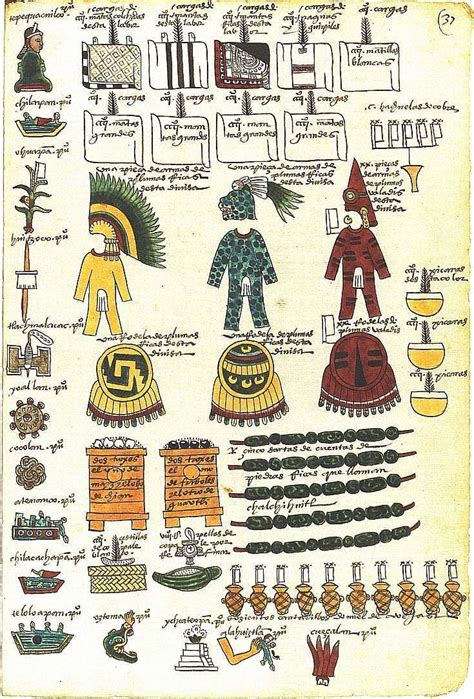The Aztec tribute system was a crucial component of the Aztec civilization, serving as a foundation for their political, economic, and military power. It was a complex and structured system that governed the flow of goods and services from conquered territories to the Aztec capital, Tenochtitlan.

Background of the Aztec Empire
The Aztec civilization emerged in the 13th century, establishing an empire that dominated central Mexico by the 15th century. The Aztecs were known for their advanced society, which included a sophisticated writing system, calendar, and architectural achievements.
The Structure of the Tribute System
The tribute system was a key element in maintaining the Aztec Empire’s centralized authority. It was organized into a hierarchical structure, with the emperor at the top, followed by provincial governors and local rulers. Each conquered territory was assigned a specific quota of tribute, which was collected by Aztec tax collectors.
Types of Tribute
The tribute collected from conquered territories varied depending on the resources available in each region. It typically included:
- Agricultural products: maize, beans, squash, cotton
- Minerals: gold, silver, turquoise
- Luxury goods: exotic feathers, jaguar skins, cacao beans
- Human sacrifices: prisoners of war or designated individuals from conquered territories
Distribution and Use of Tribute
The collected tribute was transported to Tenochtitlan, where it was stored in warehouses and distributed among the Aztec elite, including the emperor, nobility, and priests. The tribute was used to support the lavish lifestyle of the Aztec ruling class, fund wars and military campaigns, and support religious ceremonies.
Consequences of the Tribute System
Positive Consequences:
- Strengthened Aztec power: The tribute system provided the Aztec Empire with vast resources to support its political and military expansion.
- Economic growth: The flow of goods and services from conquered territories stimulated trade and economic activity within the empire.
- Technological advancements: Access to new resources and materials through tribute enabled the Aztecs to develop new technologies and crafts.
Negative Consequences:
- Exploitation of conquered territories: The tribute burden placed a heavy burden on the conquered populations, leading to resentment and occasional revolts.
- Environmental degradation: The demand for tribute, particularly agricultural products, led to deforestation and soil erosion in conquered regions.
- Social inequality: The distribution of tribute resources primarily benefited the Aztec elite, exacerbating social disparities within the empire.
Collapse of the Aztec Empire
In the early 16th century, the Spanish conquistadors arrived in Mesoamerica and encountered the Aztec Empire. The Aztec tribute system played a significant role in the eventual collapse of the empire.
The Spanish exploited the discontent among the conquered territories, who were burdened by the tribute system. They formed alliances with indigenous groups who were eager to overthrow Aztec rule.
Furthermore, the Spanish used the tribute system to their advantage. They demanded gold and other valuable resources as tribute, which weakened the Aztec Empire’s economic base.
Conclusion
The Aztec tribute system was a defining characteristic of the Aztec civilization. It served as a pillar of Aztec power and provided the resources necessary for the empire’s expansion and dominance. However, the system also had negative consequences, including exploitation of conquered territories, environmental degradation, and social inequality. The tribute system played a significant role in the Aztec Empire’s eventual collapse, as it became a source of vulnerability and resentment.
